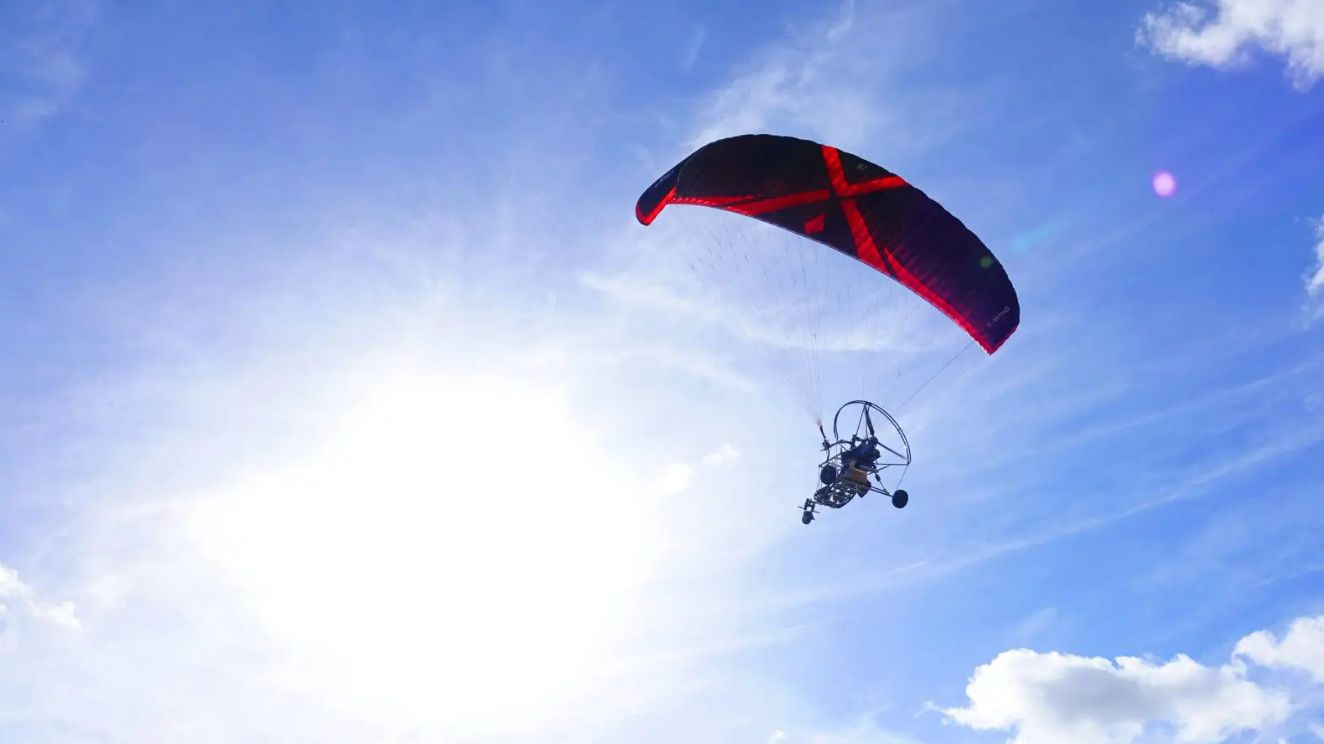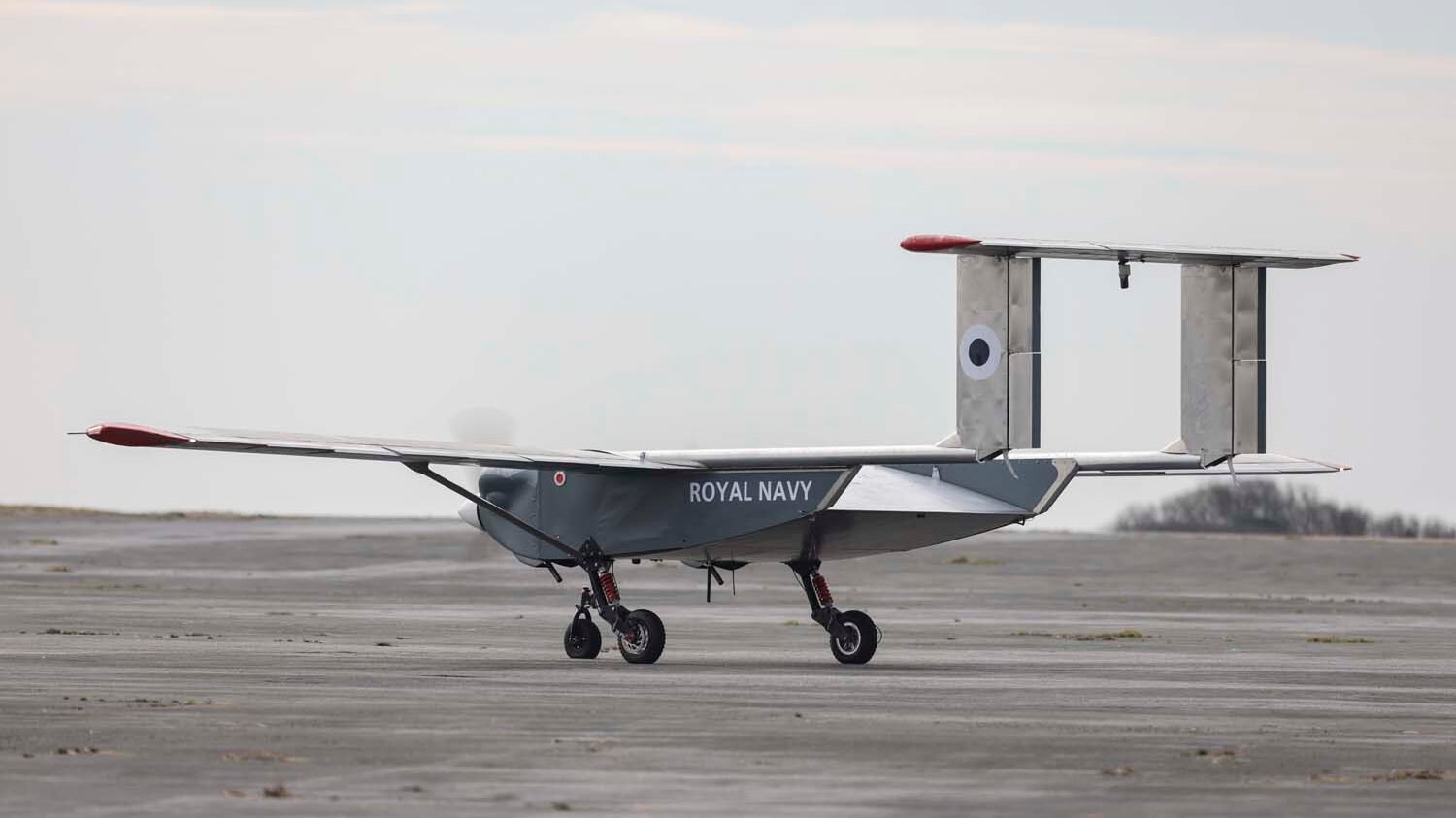
Animal Dynamics has forecast the Stork parafoil UAS will enter “high rate” production in 2026. (Animal Dynamics)
BELFAST — The UK Royal Navy has started testing for the latest phase of its Uncrewed Aerial System Heavy Lift Challenge (UASHLC) program and is assessing seven drones during flying trials at Predannack Airfield in Cornwall in southwest England.
The new round of testing, which commenced Monday, “predominantly” focuses on competitors proving “load carriage capabilities to inform future procurement,” a Royal Navy spokesperson told Breaking Defense in a statement. “Each of the 7 companies will be showcasing their accelerated development progress over the last 4 months by flying 1 aircraft each.”
UASHLC has been designed to explore future uncrewed maritime concepts, including assessment of ship-to-ship (intra-theater) and ship-to-shore (inter-theater) beyond visual line of sight (BVLOS) resupply operations, potentially covering uncrewed delivery of humanitarian aid items, ammunition and spare parts. The Royal Navy has not set out any speed or range targets for the tests, but has previously assessed competitors against such criteria.
“Understanding the technological and regulatory risks of these large UAS helps support decision making and develop use cases by having military user input and feedback early in the process,” added the Royal Navy spokesperson.
Older UASHLC tests saw the Royal Navy’s drone experimentation wing, 700X Naval Air Squadron based at RNAS Culdrose, Cornwall, evaluate Malloy Aeronautics’ T-600 quadcopter and Windracer’s Ultra fixed wing drone. In April 2022 the latter successfully flew a 100 kilogram payload 1,000 kilometers (about 620 miles) before making a planned drop. At the time, the Royal Navy said that the two manufacturers had also been given £300,000 ($369,000) contracts to “further develop their drones.”

A Windracer Ultra fixed wing UAV taxis into position at Predannack Airfield, Cornwall, during a series of test flights held in April 2022. (UK MoD)
The Navy hasn’t said which seven firms are involved in this year’s competition, but one, Animal Dynamics, told Breaking Defense it was throwing its hat in the ring. The company, pitching the Stork STM parafoil UAV, previously conducted a fly-off in Q4 2022 in which the aircraft flew for “around an hour” with a 100 kilogram-plus payload, according to Adrian Thomas, company CEO. The Royal Navy measured fuel consumption of the Stork as part of the assessment.
Paul Topping, business development director at Animal Dynamics, said, “What we’re flying at the moment is basically a test mule, which is representative of the final vehicle, but without a reserve fuel tank, which can be added, it has a range of 150 kilometers.”
In line with Royal Navy feedback from the earlier test phase, the Stork has undergone modifications to be better suited for other maritime missions. A SATCOM system to enhance BVLOS capabilities and a sonobuoy dispenser have been integrated, while wing control development continues in order to address deck launch compatibility.
“I think it was in January that the idea [for the sonobuoy dispenser] came in, but we’ve been able to put that in place and satisfy the CAA [Civil Aviation Authority] that the vehicle is still safe to fly, because the engineering decisions are all fully documented and the assets that prove the engineering decisions can be generated immediately [based on digital twin technology],” added Topping.
In a separate move, designed in part to address uncrewed sonobuoy drop capabilities, the Royal Navy rolled out Project Proteus in July 2022, issuing Italian firm Leonardo with a £60 million ($73.8 million) contract for the manufacture and delivery of a new drone “demonstrator,” scheduled to make a first flight in 2025.
Outside of new sonobuoy capabilities experimentation, resupply drones offer promise to operators facing logistics issues in highly contested environments.
“Ukraine is the kind of conflict that we had in mind when we drew up the specifications of the [Stork] vehicle, people getting cut off, a very kind of nonlinear front line,” said Topping. “Obviously there were lots of public calls for drone use during the [Russian] siege in Mariupol. That’s a situation where you can put these things in at relatively low cost, so it doesn’t matter if there’s a high attrition rate, there’s no risk to life.”
Based on company priorities and continued development of Stork, supply of the aircraft to Ukraine is not under consideration at the moment.
“We are basically working on making a production representative prototype for this year,” said Thomas. “Then our intention is to get that out into the field into exercises and use the feedback to refine the concept of operation…but the idea is to have high run rate production in 2026, which sounds optimistic but we’ve been flying the test mules and working on design for the last three years.”
Thomas said however that when ground supply becomes really difficult “next winter” in Ukraine, the Stork would be available for operations.
Textron, Leonardo bank on M-346 global experience in looming race for Navy trainer
“The strength we think we bring is that [the Navy is] going to go from contract to actually starting to turn out students much quicker than any other competitors,” a Textron executive told Breaking Defense.



























